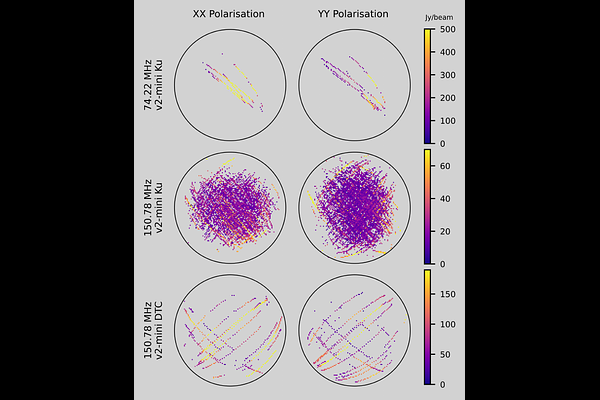The Growing Impact of Unintended Starlink Broadband Emission on Radio Astronomy in the SKA-Low Frequency Range

The Growing Impact of Unintended Starlink Broadband Emission on Radio Astronomy in the SKA-Low Frequency Range
Dylan Grigg, Steven Tingay, Marcin Sokolowski
AbstractWe present the largest survey to date characterising intended and unintended emission from Starlink satellites across the SKA-Low frequency range. This survey analyses ~76 million full sky images captured over ~29 days of observing with an SKA-Low prototype station - the Engineering Development Array 2 - at the site of SKA-Low. We report 112,534 individual detections of 1,806 unique Starlink satellites, some emitting broadband emission and others narrowband emission. Our analysis compares observations across different models of Starlink satellite, with 76% of all v2-mini Ku and 71% of all v2-mini Direct to Cell satellites identified. It is shown that in the worst cases, some datasets have a detectable Starlink satellite in ~30% of all images acquired. Emission from Starlink satellites is detected in primary and secondary frequency ranges protected by the International Telecommunication Union, with 13 satellites identified between 73.00 - 74.60 MHz and 703 identified between 150.05 - 153.00 MHz. We also detect the reflections of terrestrial FM radio off different models of Starlink satellites at 99.70 MHz. The polarisation of the broadband emission shows the flux density of two orthogonal polarisations is anti-correlated with temporally shifting spectral structure observed. We compare our results to previous EDA2 and LOFAR results and provide open public access to our final data products to assist in quantifying future changes in this emission.